Beauty
What Hair Type Responds Best to FUT or FUE

Choosing the right hair transplant method is essential for achieving natural-looking, long-lasting results. The two most commonly used techniques—FUT (Follicular Unit Transplantation) and FUE (Follicular Unit Extraction)—each offer distinct advantages depending on a patient’s hair type, degree of hair loss, and personal goals. If you’re exploring your options in North Carolina, both FUT hair transplant in Raleigh NC and FUE hair transplant in Raleigh are offered by leading clinics with modern technology and experienced surgeons.
In this guide, we’ll discuss which hair types respond best to FUT or FUE, what to expect from each procedure, and how to determine which approach may suit your unique needs.
Understanding the Basics: FUT vs. FUE
Before diving into hair type compatibility, it’s important to briefly understand how these two methods differ:
- FUT (Follicular Unit Transplantation) involves removing a thin strip of scalp from the back of the head (the donor area), then dissecting it under a microscope to extract individual follicular units. These are then implanted into the balding areas.
- FUE (Follicular Unit Extraction) involves extracting individual follicular units directly from the donor area using a small punch device, leaving no linear scar.
Both techniques aim to restore hair density and coverage, but each comes with different recovery profiles, scarring potential, and suitability for specific hair types.
Hair Type and Texture: Why It Matters
Your natural hair type plays a major role in determining how effective a transplant will look. Key factors include:
- Curl pattern (straight, wavy, curly, or coily)
- Hair shaft diameter (fine, medium, coarse)
- Hair colour vs. scalp contrast
- Density of donor hair
Some hair types can achieve better coverage and a more natural aesthetic with fewer grafts, making them ideal candidates for either FUT or FUE depending on other variables.
Best Hair Types for FUT Hair Transplant in Raleigh, NC
FUT is often ideal for patients with the following characteristics:
Thick, Dense Hair
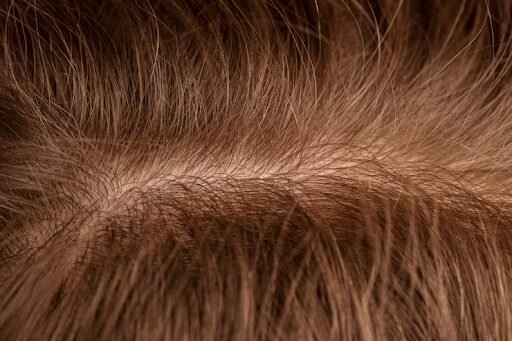
Patients with thick hair shafts and high donor density tend to benefit from FUT because more grafts can be harvested in a single session. Thick hair provides better coverage and volume, especially useful when treating large bald areas.
Wavy or Curly Hair
Wavy and curly hair types offer more visual scalp coverage, meaning fewer grafts are needed to create the illusion of fullness. FUT allows the surgeon to harvest a large number of grafts efficiently from the densest part of the scalp.
Patients Needing High Graft Volume
If you have extensive hair loss (Norwood Scale 4 or above), FUT is often preferred because it can yield a higher number of grafts in one session compared to FUE. This is particularly beneficial for patients planning a single, comprehensive procedure.
Scar Concealment Isn’t a Major Concern
Since FUT leaves a linear scar, it’s more suitable for individuals who typically wear their hair longer in the back and aren’t concerned about concealing the donor area.
Best Hair Types for FUE Hair Transplant in Raleigh
FUE is ideal for patients who want minimal scarring and faster recovery, and it suits particular hair types as well:
Fine or Straight Hair
FUE works well for straight or fine hair types, especially in smaller transplant areas. Although fine hair offers less coverage per graft, FUE allows for strategic placement of follicles to maximise the aesthetic outcome.
People Who Prefer Short Hairstyles
FUE is the preferred method for those who wear short hair, as the procedure results in tiny dot scars that are nearly invisible, unlike the linear scar from FUT.
Patients with a Tight Scalp
For individuals with tight scalp skin—where FUT strip removal may be challenging—FUE offers a less invasive alternative.
Low to Moderate Hair Loss
FUE is commonly recommended for patients with mild to moderate hair loss or those needing smaller areas filled in, such as the temples or crown.
Ethnic Hair Considerations
Different ethnic groups present unique hair characteristics that can influence the choice between FUT and FUE:
- Afro-textured hair is often curly and coarse, which offers excellent coverage but requires a surgeon skilled in dealing with curved follicles. FUT may be more predictable in such cases.
- Asian hair tends to be straight and thick but with lower donor density, making FUE a more viable option when individual follicle placement is critical.
- Caucasian hair varies more widely, but many individuals have good donor areas suitable for either FUT or FUE depending on goals.
If you’re considering FUE hair transplant in Raleigh, consult a clinic experienced in working with diverse hair types to ensure proper technique and tools are used.
What About Hair Colour and Scalp Contrast?
Another factor to consider is the contrast between your hair and scalp colour. Individuals with high contrast (dark hair and light scalp) require more density to achieve natural-looking coverage. FUE allows for strategic graft placement in these cases, while FUT provides volume more effectively.
Those with low contrast (blonde or grey hair and light skin) may need fewer grafts, as scalp visibility is naturally reduced. Both techniques can be effective here depending on hair density and texture.
Long-Term Maintenance Considerations
Choosing the right technique isn’t just about the initial results—it’s about long-term planning. FUT generally preserves more of the donor area, which is useful if multiple procedures are needed over time. FUE, on the other hand, can overharvest the donor region if not done carefully, which may limit future options.
Some patients eventually opt for combination procedures—starting with FUT and later moving to FUE—to maximise donor resources.
Conclusion
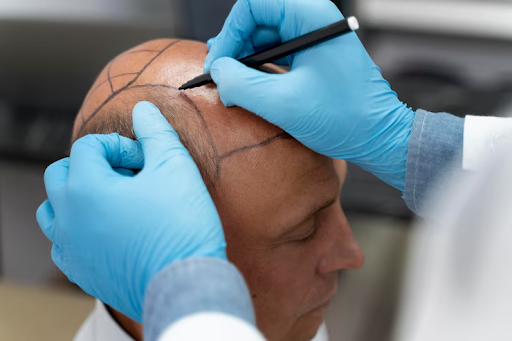
Whether you choose a FUT hair transplant in Raleigh, NC, or go for an FUE hair transplant in Raleigh, the best approach depends on your hair type, goals, and lifestyle. Curly, thick, or dense hair types often achieve superior coverage with FUT, especially in cases of extensive hair loss. Fine, straight, or sparse donor hair may benefit more from the precision of FUE, especially when minimal scarring and shorter recovery times are a priority.
Ultimately, the best way to determine suitability is through a consultation with an experienced hair restoration surgeon who can assess your hair type, scalp condition, and long-term goals. With expert guidance and realistic expectations, both FUT and FUE can deliver natural, transformative results.
Beauty
Electrolysis Hair Removal Explained: 10 Key Insights
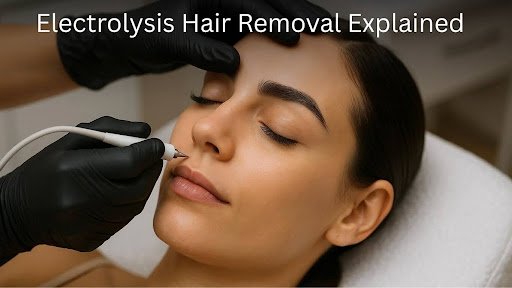
If you’ve ever wondered whether there’s a truly permanent way to remove unwanted hair, electrolysis is one of the rare options that delivers. It’s a method that treats the hair at its root and offers long-term results that many other techniques cannot match.
Electrolysis hair removal is a permanent method that uses a fine probe and a small electric current to destroy hair growth cells within each follicle.
It works on all hair colors and skin types, unlike laser treatments that rely on pigment. Once a follicle is treated, the hair cannot regrow. It’s a safe, precise, and FDA-approved solution for lasting hair removal.
In this article, I’ll walk you through how electrolysis actually works, where it can be used, what to expect before and after a session, how many treatments you might need, and how it compares with other hair removal methods.
Electrolysis Hair Removal Explained: 10 Key Insights
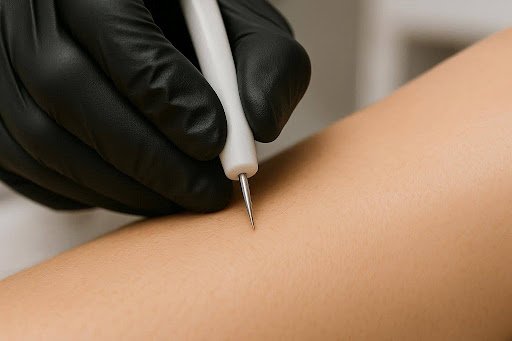
Electrolysis hair removal is based on the simple principle of destroying the hair growth cells within each follicle so that they can no longer produce hair. It’s a meticulous, targeted treatment performed one hair at a time, offering precision and long-term results.
Here’s how the process works:
- A trained electrologist uses a fine, sterile probe that’s about the width of a hair strand. This probe is gently inserted into the natural opening of the hair follicle, not the skin, so it’s virtually painless when done correctly.
- A small electrical current is then delivered through the probe to the base of the follicle, where the growth cells are located.
- This current destroys or weakens the follicle’s ability to grow new hair. The treated hair is then carefully removed with sterilised tweezers.
There are three main electrolysis methods used in clinics:
- Galvanic (Direct Current): Uses a low-level electric current that causes a chemical reaction inside the follicle. It produces sodium hydroxide, which gradually destroys the hair growth cells. This method is slower but extremely thorough, ideal for coarse or stubborn hair.
- Thermolysis (High-Frequency Current): Uses short bursts of radio frequency to generate heat, which cauterises the follicle tissue in just a fraction of a second. It’s faster and often used for smaller areas like the upper lip or chin.
- Blend Method: Combines both galvanic and thermolysis techniques, delivering the chemical and heat effects simultaneously. This method is highly effective for a wide range of hair types and skin tones.
The choice of technique depends on your skin type, pain tolerance, and hair texture. A skilled practitioner will select the most suitable method for each client and even switch techniques across areas for optimal results.
Areas Electrolysis Can Treat
Electrolysis is incredibly versatile. Because it doesn’t rely on pigment (unlike laser), it can safely treat any hair colour from white and blonde to dark brown or black and all skin tones, including very fair or deeply pigmented skin.
Common treatment areas include:
- Face: Upper lip, chin, jawline, sideburns, cheeks, eyebrows
- Body: Underarms, arms, legs, chest, back, abdomen
- Intimate areas: Bikini line and Brazilian zones
- Other delicate areas: Fingers, toes, and around the nipples
This flexibility makes electrolysis a great option for people who may not have been good candidates for laser hair removal, such as those with light or grey hair, hormonal hair growth (like PCOS-related), or mixed hair types.
Benefits of Electrolysis Hair Removal
Many people turn to electrolysis after trying other methods like waxing, threading, or laser, and finding that regrowth or incomplete results persist. Here’s why electrolysis stands out:
- Permanent results: Electrolysis destroys the growth cells in the follicle, meaning that once treated, the hair doesn’t return.
- Clinically proven and FDA-approved: Electrolysis is the only FDA-approved method for permanent hair removal, a distinction that even laser treatments do not have.
- Works on all hair and skin types: Because it doesn’t depend on pigment, it’s effective on light, dark, coarse, or fine hairs, including blond, white, and red hair.
- Safe and precise: Modern electrolysis equipment and sterile probes make the treatment safe for almost all skin types, including sensitive areas.
- Excellent for smaller or resistant areas: It’s often used to “finish” areas where laser treatment has left behind lighter or finer hairs.
When performed by an experienced professional, electrolysis offers clean, lasting, and predictable results.
What to Expect During a Session
Here’s roughly what a client might go through:
Preparation:
- The area should be clean and free of makeup, lotions, or creams.
- Avoid waxing, plucking, or threading weeks ahead of treatment, so the follicle remains present.
During treatment:
- The technician inserts the fine probe into one follicle at a time.
- You might feel mild sensations, a heated or stinging feeling as the current is applied.
- The intensity is adjusted to your comfort and your skin’s tolerance.
Session length & frequency:
- Small areas (e.g. upper lip) may take 15-30 minutes.
- Larger zones (legs, back) could take much longer, or even be split across sessions.
- Treatments are spaced out over time so the skin recovers (often weekly or biweekly at first).
Side Effects and Safety
Because electrolysis works at the microscopic level, side effects are usually mild and temporary. Possible reactions include:
- Redness or slight swelling
- Light scabbing or crusting
- Sensitivity or tenderness
To minimize risks:
- Apply gentle aftercare (described below)
- Avoid picking scabs
- Use sun protection
- Follow the technician’s instructions
Electrolysis is generally safe for all skin types when performed by experienced professionals. For particularly sensitive skin or skin conditions, a consultation is always prudent.
How Many Sessions Are Needed?
There’s no one-size-fits-all answer. The number of sessions depends on:
- The size of the treatment area
- Hair density (how many hairs per follicle)
- The hair growth cycle and how many hairs are active
- The type of hair (thicker hair may need more work)
On average, many clients begin to see noticeable hair reduction after 10-20 sessions (especially for facial zones). For larger areas or dense hair, it might take 20-30 or more.
Each session chips away at remaining active follicles until very few remain.
Electrolysis vs. Other Hair Removal Methods
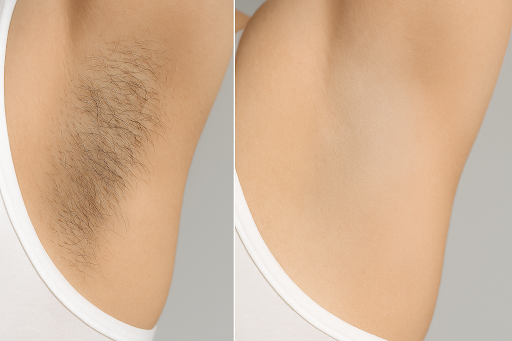
Here are the main distinctions:
Electrolysis vs Laser:
- Laser uses light energy to target pigment; it’s great for dark hair on light skin but less effective on light or fine hair.
- Electrolysis works on all hair colors and textures.
- Only electrolysis is recognised (by the FDA in the U.S.) as a permanent hair removal method.
Why choose electrolysis over others:
- If your hair is light, grey, or fine
- If the laser hasn’t worked well for you
- If you want a truly permanent solution and are willing to invest time
Waxing, threading, and shaving are all temporary. They don’t destroy the root and hair will regrow repeatedly.
Aftercare and Recovery
Proper aftercare helps your skin heal and reduces the risk of complications.
Immediately after treatment:
- Apply a cold compress or soothing gel
- Avoid sun exposure (use SPF)
- Don’t pick or scratch any scabs
- Use very gentle skincare (mild cleansers, avoid active ingredients)
Long-term care:
- Continue to protect your skin from UV
- Avoid harsh treatments or exfoliants in the treated area
- Maintain hydration and gentle skin products
- Return for follow-up sessions as advised
Conclusion
So, does electrolysis work? Yes. When performed by a qualified professional, it’s one of the few proven methods for permanent hair removal. Electrolysis effectively destroys the hair follicle at its root, preventing regrowth for good. It’s safe, versatile, and ideal for all skin tones and hair types, including light or fine hair that laser often misses.
If you’re considering electrolysis hair removal in London, choose a reputable clinic with experienced practitioners who can assess your needs and create a tailored treatment plan. With patience and consistent sessions, you’ll achieve smooth, long-lasting results you can feel confident about.
FAQs
Is electrolysis painful?
You may feel mild heat, tingling, or a slight stinging sensation when the current is applied. Most people say it’s tolerable. The technician can adjust the intensity to your comfort.
Is it safe for sensitive skin?
Yes, when performed correctly. For very sensitive or reactive skin, start with small test areas and notify your technician of any skin conditions. Proper aftercare is key.
How long does each session take?
It depends on the area size. Small areas (upper lip, chin) may take 15–30 minutes. Larger zones (legs, underarms) can take an hour or more. Your technician will estimate based on your hair and skin.
Can electrolysis be done on all body areas?
Yes, it’s suitable for nearly any part of your body, including face, bikini area, underarms, legs, arms, and back.
Beauty
Ready in Minutes: CurlyMe Wear and Go Wigs & 360 Glueless Wigs
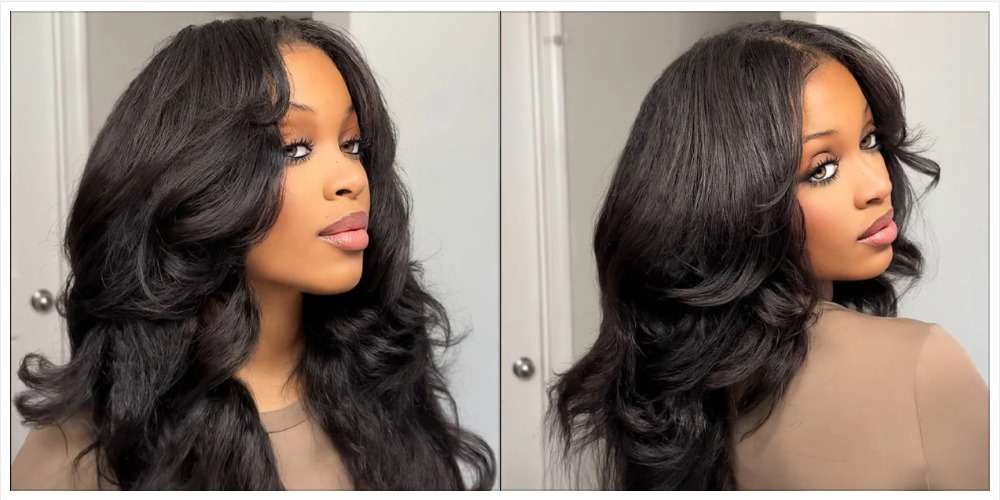
In a world where time is precious and beauty trends move fast, convenience and style are no longer optional—they’re essential. That’s where CurlyMe’s Wear and Go Wigs and 360 Glueless Wigs step in, offering the perfect solution for anyone who wants to look effortlessly flawless without spending hours in front of the mirror. Whether you’re a busy professional, a student on the go, or simply someone who values ease and versatility, these wigs are designed with you in mind.
CurlyMe wear and go wigs: Effortless Beauty in Seconds
As the name suggests, Wear and Go Wigs are designed to be worn instantly—no glue, no lace cutting, no long styling sessions. CurlyMe’s collection of wear and go wigs is perfect for beginners and seasoned wig lovers alike. These units come pre-plucked, pre-styled, and ready to wear straight out of the box.
What sets them apart is their natural look and snug fit. Featuring pre-cut lace and adjustable straps, CurlyMe wear and go wigs blend seamlessly with your hairline and stay secure all day. Whether you’re running errands, heading to work, or stepping out for a casual meet-up, you can throw on your wig and be out the door in minutes.
They’re also incredibly lightweight and breathable, making them comfortable for all-day wear. And because they’re made with 100% human hair, you can still curl, straighten, or restyle them as you wish.
CurlyMe 360 glueless wig: Full Coverage Meets Flexibility
If you’re looking for maximum styling versatility and full head coverage, CurlyMe’s 360 Glueless Wigs are a must-have. These wigs feature a full lace perimeter that allows you to part your hair in any direction—front, back, or sides—while still enjoying the benefits of a glueless, secure fit.
What makes 360 glueless wigs unique is the ability to achieve high ponytails, buns, or updos with ease. The lace runs around the entire hairline and nape, giving you the freedom to style your hair however you like without revealing any wig tracks. And since they’re glueless, there’s no need for adhesives or salon visits to install them.
CurlyMe’s 360 glueless wigs also feature adjustable bands and built-in combs, ensuring a snug and customizable fit that stays put all day long. They’re great for those who want both functionality and a natural-looking hairline without the hassle.
Why Choose CurlyMe?
CurlyMe has built a reputation for quality, affordability, and user-friendly design. All of their wigs are made with 100% virgin human hair, offering durability, softness, and a natural finish. Their wear and go wigs and 360 glueless wigs are crafted to save you time, protect your natural hair, and keep you looking fabulous no matter what your day throws at you.
Plus, CurlyMe offers a variety of textures—straight, body wave, curly, deep wave—and lengths to suit every personality and preference. Whether you prefer a sleek bob or voluminous curls, there’s something for everyone.
The Perfect Combo: Ready-to-Wear Meets Total Versatility
Combining Wear and Go Wigs with 360 Glueless Wigs gives you the best of both worlds: speed and style versatility. On the days when you’re in a rush, a wear and go wig is your best friend. For special occasions or days when you want to switch up your hairstyle completely, the 360 glueless wig has you covered.
Together, they create a complete hair wardrobe that adapts to your life—beautifully and effortlessly.
Final Thoughts
Gone are the days of time-consuming wig installs and messy glues. With CurlyMe’s Wear and Go Wigs and 360 Glueless Wigs, achieving a flawless, salon-quality look has never been easier. These wigs are made for real life—fast, flexible, and fabulous.
So if you’re ready to simplify your routine without compromising on beauty, explore CurlyMe’s collection and discover wigs that are truly ready in minutes.
Beauty
Why CC Cream Deserves a Spot in Every Busy Woman’s Morning Routine?
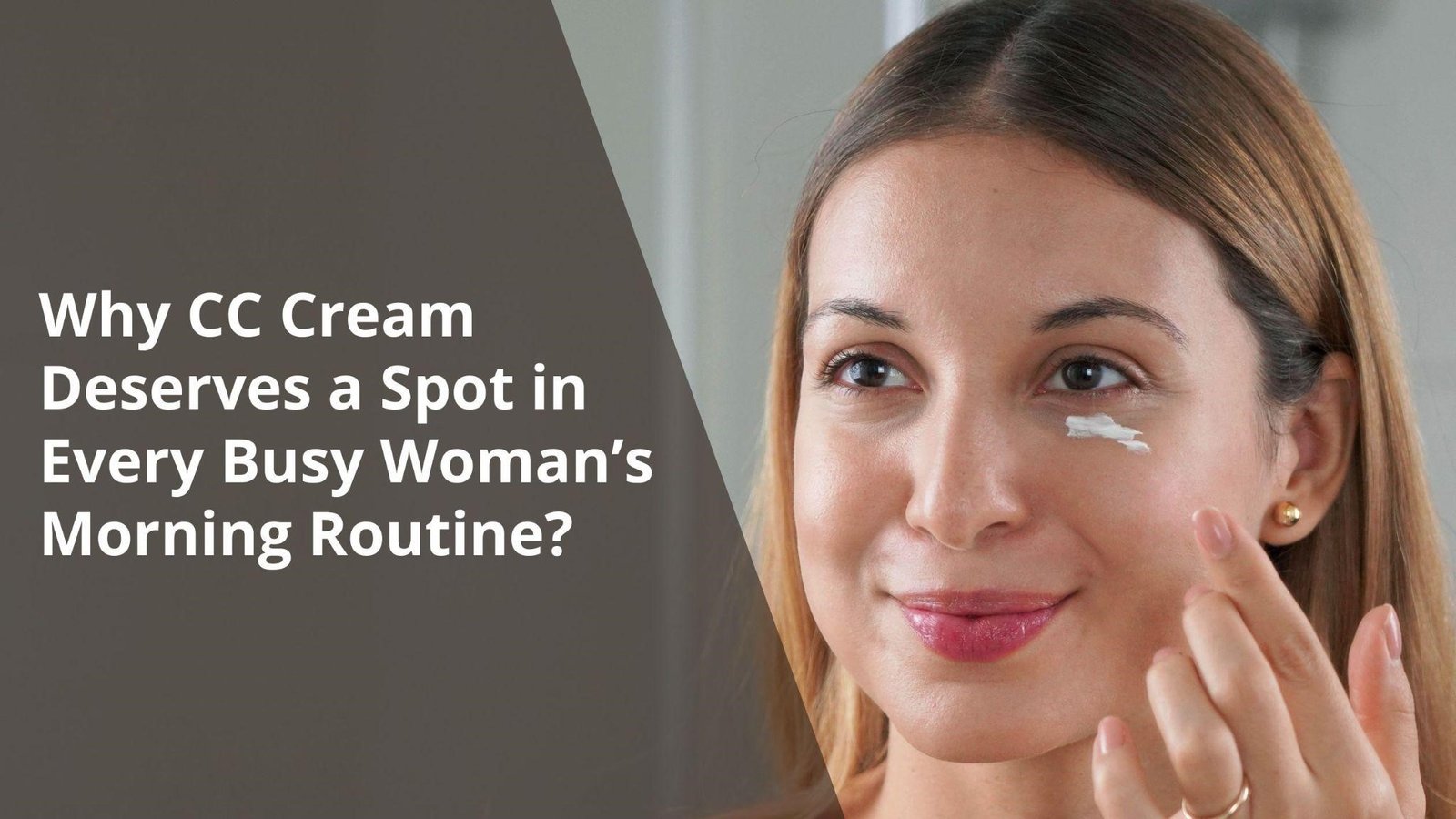
The day doesn’t start softly anymore. Your phone hums before the sun is even up. The coffee pot gurgles in the kitchen. Somewhere in the background, a text tone chimes with a reminder you already knew was coming. You pass the mirror on your way to grab your bag, and pause. There’s your face. A little tired, a little uneven, not quite ready to match the energy the day is demanding.
You could go through the whole routine. Moisturizer, sunscreen, primer and foundation. Or you could reach for the product that’s quietly doing it all for you. That’s where CC cream for daily use becomes less of a beauty buy and more of a morning ritual.
One Step That Feels Like Five
You know that moment when you open your bathroom cabinet and the line of bottles is just staring back? Moisturizer, SPF, primer and foundation, each with its own promise, each demanding its own minute. A multi-tasking CC cream folds all of that into one smooth, easy step.
It’s not just convenience, it’s that first glide across your skin when you realize you’re done in under a minute. No rush. No juggling. Just quick, quiet satisfaction.
Skin That Looks Like You Slept (Even If You Didn’t)
Some mornings, your reflection tells the truth. The redness around the nose, faint shadows under the eyes, and a little dullness where there used to be a glow. CC cream doesn’t cover your skin so much as it restores it. It softens, brightens, and blends without erasing what’s real. The result is that elusive “yes, I got eight hours” look, even if your actual night was closer to five.
Coverage That Bends With Your Day
A full coverage cc cream is a bit like your favorite blazer. It works whether you’re going casual or stepping into something more polished. A sheer sweep for Saturday errands. A second layer for Monday’s big presentation. It adapts to the moment and stays comfortable enough that you forget you’re even wearing it.
Sun Protection You Don’t Have to Plan For
Here’s the thing about the sun. It doesn’t care if it’s cloudy, cold, or a quick walk from the parking lot. The CDC is clear: daily SPF is non-negotiable for healthy skin and a lower risk of skin cancer. The right CC cream quietly handles that for you, often with SPF 30 or more, so you’re protected without thinking about it. No extra step. No sticky sunscreen layer. Just safety built right in.
Makeup That Loves Your Skin Back
The best CC creams don’t just sit on the surface; they’re laced with hyaluronic acid for hydration, niacinamide for brightness, and antioxidants to fight off pollution. It’s makeup, yes, but it’s also skincare that’s working while you’re answering emails, sitting in traffic, or laughing with a friend at lunch.
Confidence, Bottled
There’s something almost grounding about catching your reflection halfway through the day and thinking, Oh, I like how I look right now. Not perfect, not airbrushed; just fresh enough to make you pause for a heartbeat. The kind of fresh that makes you seem like you’ve been sleeping well and drinking your water, even if your morning was more about coffee and car keys.
That’s what a good CC cream slips into your life. You’re standing at the sink, drying your hands, and you catch a glimpse of cheeks that still have a healthy flush, skin that still looks even. It’s not dramatic. It’s not a big reveal. It’s quiet.
But it’s the kind of quiet that changes your mood without you noticing at first. You carry yourself differently. You answer with more warmth. You might even laugh a little easier. It’s not about looking done, it’s about looking like yourself, only with a bit more light in your face and a bit more ease in your day.
Three Tiny Tricks That Change Everything
- Morning rush: Use fingertips for the fastest, most natural blend.
- Midday slump: Press a little over any spots that have faded. It revives instantly.
- Evening out: Add a light layer before dinner plans for a fresh, soft-focus glow.
Beauty That’s Backed By Experts
It’s rare when something that feels indulgent also checks the boxes on medical advice. But here, it does. Both the CDC and FDA recommend daily, broad-spectrum SPF. Choosing a CC cream with built-in protection means you’re not just doing your makeup, you’re quietly protecting your skin’s future.
The Everyday Essential
A CC cream for daily use is the beauty equivalent of a favorite shortcut: the one that saves time, makes life easier, and somehow delivers better results than the long way. It protects, perfects, hydrates, and brightens all in one go.
If your days demand polished, all-day wear, go for the full coverage cc cream. If you prefer something lighter that still works hard for your skin, the multi-tasking CC cream will be your everyday go-to.
Tomorrow morning, let your CC cream handle the hard work. You’ll step into the day looking fresh, feeling ready, and most importantly, buying back a little time for yourself.

 Blog10 months ago
Blog10 months agoHow to Deal with Scabies While Traveling

 Travel10 months ago
Travel10 months agoRichmond, Virginia Street Art Guide

 Travel10 months ago
Travel10 months agoPerhentian Islands: How to Get There, What to Expect, & More

 Travel10 months ago
Travel10 months agoHow to Live in Your Car in New Zealand

 Travel10 months ago
Travel10 months agoSouvenir in Nepal: A Guide to Unique Handicrafts and Cultural Treasures

 Travel10 months ago
Travel10 months agoVegan Guide to Dining Out in Richmond, Virginia

 Food10 months ago
Food10 months agoVegetarian Food Nepal: A Journey into Flavorful Plant-Based Cuisine

 Travel7 months ago
Travel7 months agoA Local’s Guide to Sanibel Island, Florida















